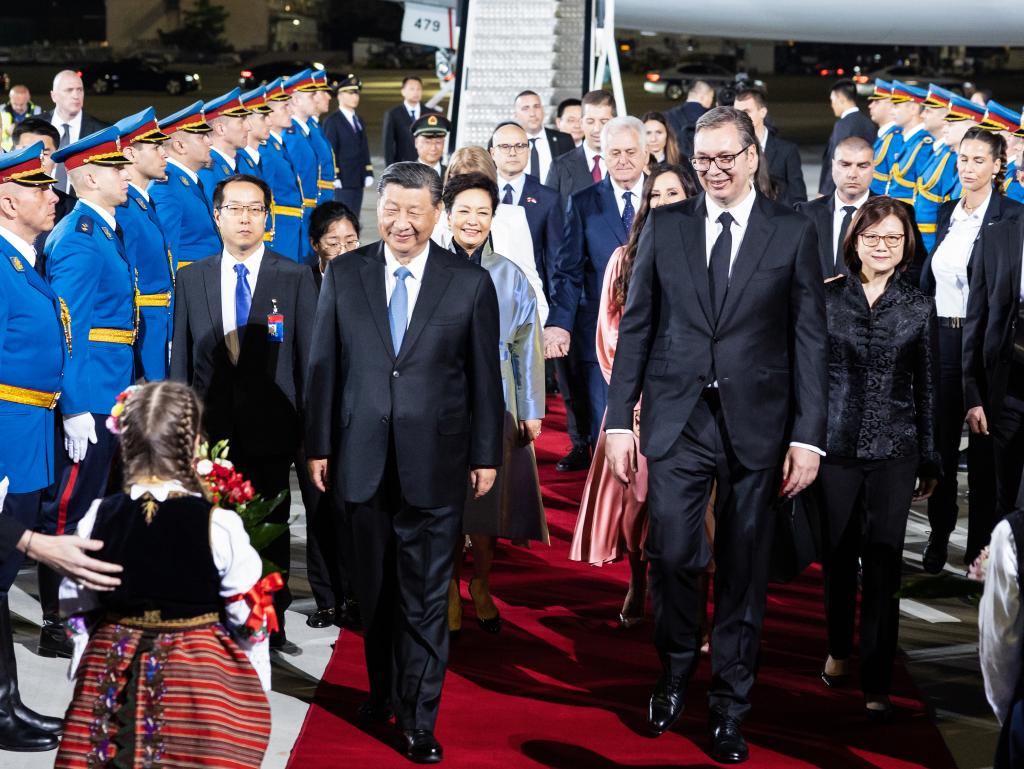Choice of nations reflects China’s strategic focus in Europe on political, economic relations

This is set to be an important month for Chinese diplomacy with President Xi Jinping visiting three European nations. These high-level interactions are likely to attract critical comments from some Western countries.
President Xi’s European tour, which began in France, marks his first state visit to Europe in five years, following the disruptions caused by the COVID-19 pandemic. His itinerary also included stops in Belgrade and Budapest.
The choice of these particular destinations reflects China’s strategic priorities in Europe with regard to political and economic relations.
READ MORE: Experts hail fruitful results of Xi's visit
France, Serbia, and Hungary, while differing in their geopolitical positions and perspectives within Europe, share a common pragmatic attitude toward China.
France, alongside Germany, stands as one of the European Union’s most influential member states and boasts an extensively cooperative relationship with China. This year marks the 60th anniversary of diplomatic relations between the two countries, which is supported by a comprehensive strategic partnership.
Additionally, as a permanent member of the United Nations Security Council, France holds a significant position on the global stage. French President Emmanuel Macron advocates the concept of strategic autonomy for Europe, focusing on sovereignty and reducing reliance on American influence.
Hungary is often seen as the most influenced by China within the EU bloc. Hungarian Prime Minister Viktor Orban pursues a multi-vector foreign policy, fostering strong ties with Russia and China, which sometimes deviates from EU norms and faces indignation from some other EU nations and officials.
This year, as China and Hungary celebrate 75 years of diplomatic relations, President Xi’s visit is anticipated to strengthen Sino-European relations, injecting stability and positive dynamics into the complex global scene. Furthermore, Hungary is involved in building Europe’s longest high-speed rail line, which extends about 1,500 kilometers from Budapest to Athens.
Hungary has also attracted substantial investments from major Chinese firms like BYD, a leading electric vehicle manufacturer that is setting up a plant there, and CATL, a key battery producer.
Serbia, an EU candidate and a small country strategically located at the crossroads of Central and Southeastern Europe, has become an important partner in China’s Belt and Road Initiative (BRI).
Its geostrategic position makes Serbia a gateway to Europe, particularly through the land route that seeks to connect Greece to the heart of Europe. This strategic importance is the primary reason for several major infrastructure projects in Serbia, such as the construction of the Belgrade-Budapest high-speed railway, a flagship project of the BRI.
This year marks the 15th anniversary of bilateral relations between China and Serbia, highlighted by the signing of a comprehensive strategic partnership eight years ago during Xi’s visit to Belgrade. The collaboration between the two nations is based on mutual respect and benefit, fostering prosperity and significantly contributing to Serbia’s development and revitalization.
As global dynamics shift, the strategic partnership between Serbia and China continues to strengthen, creating significant implications for regional politics and economic development.
This relationship, however, is unfolding against the backdrop of increased scrutiny from the European Union, particularly following its recent anti-subsidy probe into Chinese electric vehicles (EVs).
Despite the criticism and lack of understanding from Brussels, Serbia is China’s first comprehensive strategic partner in Central and Eastern Europe, and the two countries share a deep and steadfast friendship.
During COVID-19, amid the absence of substantial international solidarity, China and Serbia collaborated closely to save lives.
Xi’s visit to Belgrade further reinforces the long-standing bond between the two nations. Often described as “steel friends,” this term reflects not only their robust cooperation in the steel sector, highlighted by the major Chinese investment in Hesteel Smederevo, but also their resilient traditional friendship.
There is significant potential for developing a deeper and comprehensive strategic partnership between China and Serbia in many areas such as artificial intelligence, biotechnology, and healthcare.
The future of Sino-Serbian cooperation could see a significant focus on technological advancement and green energy. Moreover, after the signing of free trade agreement, new opportunities for strengthening their ironclad friendship will appear.
ALSO READ: China and Europe can help build a better world by cooperating and upholding strategic autonomy
The current EU anti-subsidy probe into Chinese EVs presents both a challenge and an opportunity for Serbia. The challenge lies in navigating the EU’s concerns about so-called market distortion potentially caused by Chinese subsidies, which could affect Serbia’s own market as it integrates more closely with the EU.
Serbia has the opportunity to promote fair competition and transparent economic practices, potentially alleviating EU concerns and enhancing cooperation between China and the EU.
Serbia’s relationship with China can serve as a bridge in fostering better understanding and cooperation between China and the EU.
The author is a researcher at the Faculty of Political Sciences at University of Belgrade, Serbia.
The views do not necessarily reflect those of China Daily.


